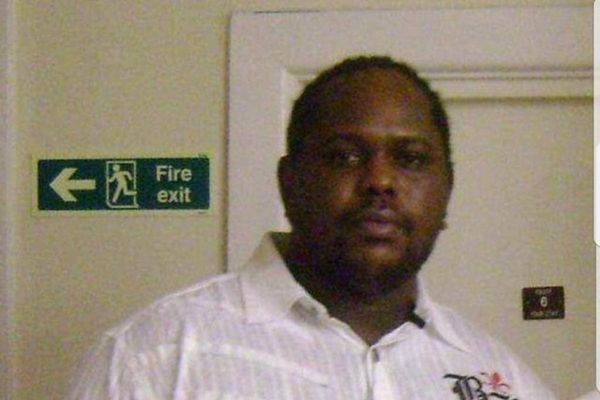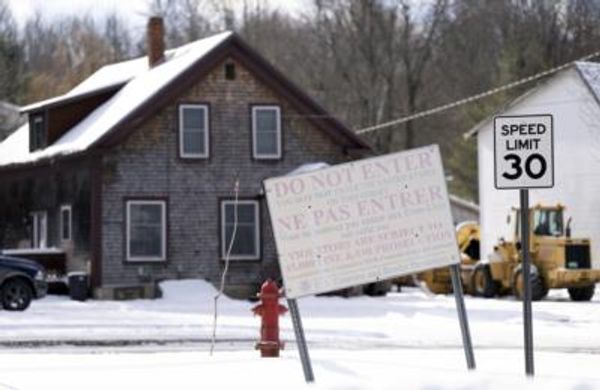Supplied: Norio Kimura
)Long after rescue teams gave up searching for survivors from the March 2011 tsunami, farmer Norio Kimura continued to painstakingly dig for his seven-year-old daughter, Yuna.
On this day 10 years ago he lost his father, wife and youngest daughter as a massive wave engulfed Japan's north-eastern Tohoku region and plunged it under water.
But he still wonders "what if".
"Local volunteer firemen came to search here on March 12, the day after the disaster," Mr Kimura tells me along the coast near to his home and where his father's body was found.
"They heard voices — there's a strong chance that it was my father's and that means there's a possibility that he was still alive."
In the days following the earthquake, three reactors at the nearby Fukushima Daiichi Nuclear Plant melted down, making the area too dangerously radioactive to search in.
His father's body was found roughly six weeks later. They found his wife's body three months later at sea.
But his daughter Yuna — who was with Mr Kimura's father at the time — was nowhere to be found.
Supplied: Norio Kimura
)"There used to be huge piles of rubble around here, I searched with volunteers for about three years but we couldn't find her," he said.
"I continued to search thinking I would do this until I died and then I thought I must get an outcome for all of the volunteers who came to help.
A search for answers
In 2016, five years after the disaster, he asked for help from the Environment Ministry — which brought in heavy machinery to clear some of the rubble.
Mr Kimura spoke to the ABC's Mark Willacy at the time, and said he would never find peace until he knew what happened to his little girl.
Within a month there was a breakthrough — they found Yuna's pink scarf and some of her remains in rubble near where his father was found.
ABC News: Yumi Asada
)"I started to think after she was found that there was a possibility that she did not die from the tsunami," he said.
"That she died [ultimately as a result] of the nuclear plant explosion [preventing search and rescue in this area].
"I felt angry when I thought that."
ABC News: Yumi Asada
)Mr Kimura said Yuna was the only person in her school to die in the tsunami. But the meltdown made this area a no-go zone and few have come back.
Mr Kimura believes his father picked up Yuna from the school and went back to their home before the tsunami hit.
But he left Yuna's older sister at the school — and she survived the tsunami.
He wants to know why. Sadly, he will never get an answer.
Supplied: Norio Kimura
)The school has become something of a memorial
Since then, what has continued to bring him solace is the abandoned school Yuna used to attend.
ABC News: Yumi Asada
)These days the exterior is overrun with weeds — though Mr Kimura tries to mow it every now and then and has planted a flowerbed outside Yuna's classroom.
To this day, the school is almost identical to how it looked 10 years ago just after the quake hit.
ABC News: Yumi Asada
)The sun has warped the books but the chalk remains on the board and the kids' backpacks and musical instruments all remain.
Mr Kimura feels his next mission is to preserve this building for himself and future generations — and so others can never forget what happened.
"I want this place to be kept. It's the school closest to the plant and must be kept so people realise we're living in a world where nuclear disasters can happen — and ask if it's worth the risk."
ABC News: Yumi Asada
)Many buildings remain abandoned
His hometown of Okuma is at a crossroads — some areas have had evacuation orders lifted and people have started to return, other parts remain desolate and overgrown.
The places that have been abandoned are destined to become a storage site for contaminated dirt removed from other parts of the prefecture.
ABC News: Yumi Asada
)More than 10 million cubic metres of contaminated dirt will be placed into interim storage before eventually being moved out of the prefecture in the 2040s.
We visit one of the nearby interim storage facilities — it's a bustling hive of heavy machinery.
Takahiro Hasegawa from Japan's Environment Ministry said he understood the frustration and distrust of residents very well, noting that he had been working on this issue for the last 10 years.
ABC News: Yumi Asada
)"We've signed contracts with 90 per cent of the residents in this area [to purchase their properties] and we are dismantling the buildings one by one," he said.
"The houses left will be dismantled."
But Mr Kimura can't bear the idea that the area where Yuna might rest could eventually be covered in concrete and turned into soil storage.
No decision has yet been made on what will happen to Yuna's school or what's most likely her final resting place.
Officials are well aware of the sensitivities surrounding Mr Kimura's story and are being as accommodating as possible.
For now, he just wants to continue sharing his story as widely as possible.
Region continues to face significant challenges
It's been a long road to recovery for Fukushima. But the government hopes the area will become a symbol of national revival ahead of the Tokyo Olympic Games.
It's encouraging residents to return with financial aid as it decontaminates land.
However, lingering worries about the nearby nuclear plant, lack of jobs and poor infrastructure are keeping many away.
Almost 12,000 people used to live in Mr Kimura's hometown of Okuma.
Now, it's closer to 3,000 despite evacuation orders being lifted in several parts of the town. And very few young people are returning.
With another 30-40 years until the Fukushima Daiichi Nuclear Power plant is decommissioned, the region continues to face significant challenges.
ABC News: Yumi Asada
)But the unrelenting resilience of this region — and people like Mr Kimura — seems unstoppable.







